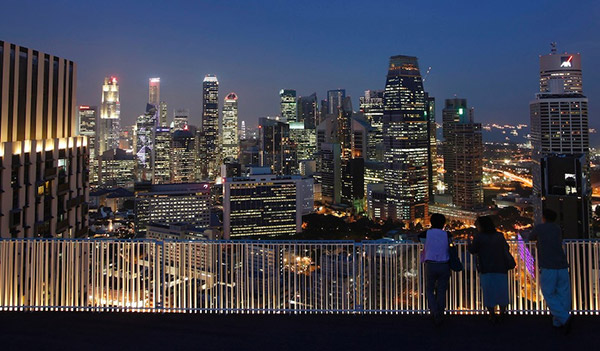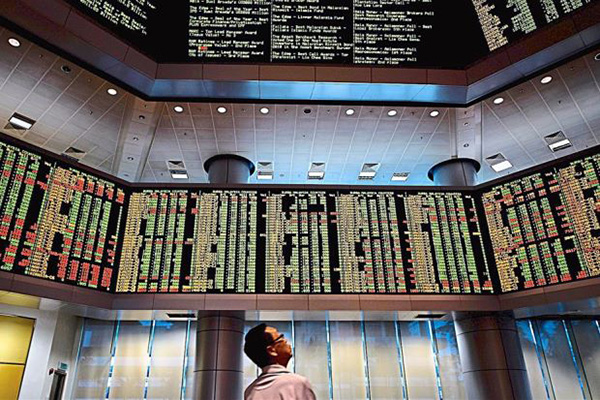 KUCHING: The appetite for raising funds from the equity market seems to have returned lately after a dull period since 2013.
KUCHING: The appetite for raising funds from the equity market seems to have returned lately after a dull period since 2013.
The year so far appears better for the global equity market with several sizeable firms putting out the word that they are seeking capital either to expand their businesses or raise their profile through a listing on the stock exchange.
One notable mention on the international front is the potential listing of Saudi Arabia’s energy firm, Saudi Aramco.
According to Bloomberg, the company could be valued at US$100 billion in size, dubbed the “biggest IPO in the world.”
It was reported that Saudi Arabia planned to sell less than five per cent of Saudi Aramco as part of the kingdom’s plans to set up the world’s largest sovereign wealth fund and to reduce the country’s economy dependent on oil.
Saudi Arabia estimated Saudi Aramco to be worth more than US$2 trillion.
Other than that, the company’s executives were considering the possibility of another listing in other bourses such as London, New York, Tokyo or Toronto.
With such a huge magnitude of fund raising activity, the stock market regulator of a few bourses –for instance Singapore Exchange Ltd and TMX Group Ltd, the owner of the Toronto Stock Exchange– have pitched the company to convince the officials of Saudi Aramco to list on their exchanges.
The large IPO could enable them to gain a slice of the listing fees upon the company’s listing.
Another listing of great interest is US-based social media company Snapchat, which is looking to list on the US Stock Exchange some time this year. It was viewed as the most expensive technology IPO ever.
The co-founders of the company were reportedly seeking a higher valuation worth more than US$25 billion for their company as sales soared by 600 per cent in 2016, as disclosed by the company’s IPO filing.
Its valuation figure was higher than other technology companies which include Facebook Inc, Alibaba and Google at the time of their listings.
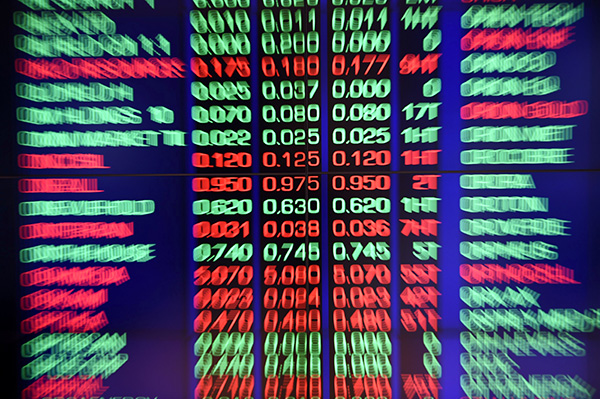
Eye on Malaysia
Locally, several corporations have also publicly announced their plans to list their subsidiaries on Bursa Malaysia as well as a few new ones.
Those include Eco World International Bhd, Edra Global Energy Bhd, QSR Brands Bhd, Cabnet Holdings Bhd, MMC Ports and Logistic Bhd, Iskandar Waterfront Holdings Bhd, Ilmu Education Group Bhd, Advancecon Holdings Bhd, U-Mobile Bhd and Edotco Group Bhd.
These IPOs were seen to be bigger than those in the past few years based on the size of capital to be raised. Bursa Malaysia Bhd’s chief executive officer (CEO) Datuk Seri Tajuddin Atan reportedly said, “Some big IPOs are expected this year.
“We also plan to expand our development role through providing greater acess to fundraising to small and medium enterprises (SMEs) in the local market, strengthening our Islamic value proposition and widening our regional footprint in Asean,” he said.
From an investment banking’s standpoint, Maybank Investment Bank Bhd (Maybank IB) is optimistic on the IPOs for this year and believed the pipeline for new listing remains healthy.
CEO Datuk John Chong noted that the healthy trend of IPOs was due to the reason that a lot of initiatives for capital raising planned last year have been carried forward to this year.
“We have quite a healthy pipeline for IPOs and fundraising for 2017.
“So, we are slightly bullish on that. That is very positive for us,” Chong reportedly said at Invest ASEAN 2017 held in Kuala Lumpur recently.
At the same time, JF Apex Securities Research’s head Lee Chung Cheng said he was still positive on the market’s outlook this year.
“Also, we expect inflow of foreign funds due to tactical asset allocation following last year’s selldown. Hence, fund raising exercise for this year will be better than last year,” he said.
Additionally, companies which are seeking more capital believed raising funds from the equity market serves as a cheaper alternative of fundraising for shareholders and companies as compared to debt financing.
To note, there were 11 initial public offerings (IPOs) joining Bursa Malaysia last year and the amount raised was RM596.6 million — the lowest since 2008.
Meanwhile in 2015, the same number of new listings entered the local bourse and the amount raised was RM4.35 billion.
Prior to that in 2014, some RM5.9 billion were raised from 14 IPOs and in 2013, RM8.2 billion was raised from 17 new listings, according to statistics from Bursa Malaysia.

Sime Darby moves to unlock values
Looking forward, one of the biggest conglomerate in Malaysia, Sime Darby Bhd (Sime Darby) is also seeking to list two of its subsidiaries to better reflect the value of their distinctive businesses.
Sime Darby had on January 26 announced a plan to create three iconic stand-alone businesses which will be pure plays in the plantation, property, and trading and logistics sectors.
The company revealed that its plantation and property businesses will be listed on Bursa Malaysia in the near future while the trading and logistics businesses will remain under Sime Darby, which will retain its listed status.
Sime Darby opined that the initiative will enable each business to pursue its distinct aspirations with greater focus and agility, taking advantage of potential growth opportunities to maximise value for all shareholders.
The conglomerate will be evaluating the implementation measures and indicative timelines to give effect to the Board’s decision.
Sime Darby Group’s president and chief executive Tan Sri Mohd Bakke Salleh affirmed its focus as being on its shareholders and how best to deliver and create more value.
“The Board’s decision is the crucial next step we must take in order to achieve the original aspirations of the shareholders in 2007 when the new, enlarged Sime Darby was created with the merger of Golden Hope Plantations Bhd, Kumpulan Guthrie Bhd and Kumpulan Sime Darby Bhd,” he said in a statement.
With the move, Bakke said shareholders will benefit from the growth potential in each of the three entities.
He explained that each business will bear the Sime Darby brand name and will continue the rich heritage of the 106 year old Malaysian icon to develop and nurture Malaysian champions which are capable of competing on the global stage.
Bakke recalled that Sime Darby was listed on November 30, 2007, immediately created the world’s largest listed palm oil producer and Malaysia’s largest property developer in terms of land bank.
Other major divisions in Sime Darby are the motors and industrial divisions, both of which are currently the largest in their sectors in the Asia Pacific region.
Sime Darby Motors is the second largest BMW dealer in the world, and one of the largest automotive dealer groups in the Asia Pacific region.
Sime Darby Industrial is the largest Caterpillar dealer in the Asia Pacific and amongst the largest in the world.
Apart from that, Bakke said other growth businesses within the Sime Darby Group are the logistics and healthcare divisions.
Sime Darby Logistics operates the largest multipurpose port in Yellow River Delta, in the Shandong Province in China and the healthcare business is one of the leading health care providers in Malaysia.
On the group’s key businesses, Bakke added,”Today, Sime Darby Plantation Sdn Bhd (Sime Darby Plantation) is the world’s largest producer of certified sustainable palm oil (CSPO), producing 2.6 million tonnes of CSPO a year, meeting the highest and most stringent standards set by the global market.
“Sime Darby Plantation accounts for 23 per cent of total global CSPO production.
“All except one of its 62 strategic operating units are certified and 85 per cent of all the oil it trades is traceable.
“In today’s extremely competitive environment, this achievement has enabled Sime Darby Plantation to enjoy premiums and to forge relationships with the most notable consumer brands in the world.
“The division’s landbank has grown from 633,000 hectares (ha) to 988,599 ha, while planted hectarage has grown from 540,000 ha to 603,254 ha, making it the largest oil palm plantation company in the world,” he outlined.
Bakke noted the plantation division’s Indonesian operations have benefitted from an accelerated replanting programme with superior planting materials, thus improving overall age profile.
He revealed that at present, 16 per cent of the total planted hectarage of 203,300 ha were under three years, which will allow yields to increase significantly in the next few years.
The acquisition of New Britain Palm Oil Ltd has cemented Sime Darby Plantation’s position as one of the leading producers of certified edible oil in the world.
Bakke believed the potential for further growth for the group’s plantation business in Papua New Guinea can be realised in the next few years.
On top of that, he noted Sime Darby Plantation has the world’s largest collection of advanced breeding lines, which is further enhanced with its pioneering genome sequencing technology.
Bakke observed the commercial planting of genome select palms has commenced in 2016.
“The downstream unit has been strategically reorganised to capitalise on the tremendous growth potential in this area.
“From a loss making unit, downstream is now profitable and showing steady growth.
“At the time of merger, there were eight refineries in the group serving a number of disparate geographies.
“Today, there are 11 refineries, of which seven are differentiated specialty refineries designed to serve key markets.
“Upon the strong foundation we have reinforced in the upstream sector, Sime Darby Plantation has positioned itself to become a major player in the downstream sector, fulfilling the aspirations at the time of the merger to create the world’s leading integrated plantation company,” Bakke said.
Furthermore, Bakke shared that the merged Sime Darby Property Bhd (Sime Darby Property) had in 2007 created a property company with the combined expertise of three players, each with excellent credentials in the development of townships.
Since then, Sime Darby Property has evolved into a more integrated developer.
Bakke observed that Sime Darby Property has access to some of the most strategic landbanks in Malaysia.
Several areas of high potential and future growth have already been identified by the government, and Sime Darby Property is strategically positioned to benefit from those plans.
Areas around the Malaysia Vision Valley, Carey Island and the High Speed Rail link are examples of such opportunities that lie in the future.
He also believed Sime Darby Property has established itself as one of the leading property developers in Malaysia, focusing on operational excellence and building core execution capabilities across the value chain.
Through strategic joint ventures and partnerships, Sime Darby Property has moved into high rise and high end developments, two key aspects of the business to secure future growth.
One such example is the Battersea Power Station development in London which positioned Sime Darby Property on the international stage.
Bakke opined that post listing of Sime Darby Plantation and Sime Darby Property in the future, Sime Darby will be a more focused company with the steady businesses of Sime Darby Industrial and Sime Darby Motors anchoring its future growth, while the logistics and healthcare divisions offer exciting opportunities in the future
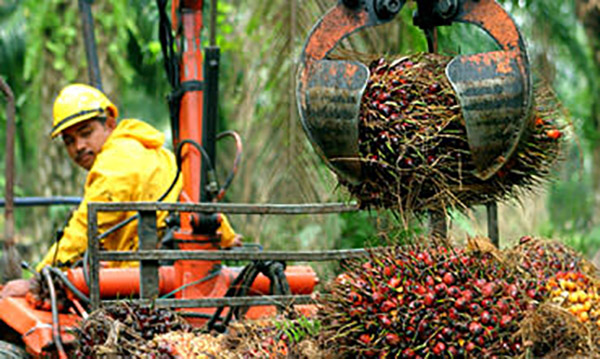 In 2008, immediately post-merger, he said Sime Darby Industrial’s revenue was RM7.2 billion and it has grown to RM9.6 billion currently.
In 2008, immediately post-merger, he said Sime Darby Industrial’s revenue was RM7.2 billion and it has grown to RM9.6 billion currently.
He noted total assets in 2008 amounted to RM4.5 billion as compared to RM9.3 billion as at June 30, 2016.
Sime Darby revealed that the division operates in 11 countries and territories.
“Sime Darby Industrial is exploring new opportunities in new energy solutions, while exploring opportunistic expansion in key geographies in its traditional business.
“At the time of merger, Sime Darby Motors operated in eight countries, dealing in 17 marques.
“Today, Sime Darby Motors represents 28 marques in 10 countries.
“At the end of the last financial year ended June 2016, Sime Darby Motors had a sales volume of about 83,000 units across Asia and Australia and has stamped its position as one of the leading dealer groups in the region,” Sime Darby said.
Furthermore, Sime Darby added Sime Darby Logistics at the time of merger was a tiny part of the group’s China operations, with a total annual throughput of 9.7 million tonnes.
“Today, Sime Darby Logistics owns and operates five ports with a total throughput of 30.3 million tonnes of general cargo and 215,700 twenty-foot equivalent unit (TEU) of container.
“The healthcare business was a single hospital operation in 2007.
“Today, it is a 50:50 joint venture with one of the leading players in the healthcare business, Ramsay Health Care.
“It operates six hospitals in Malaysia and Indonesia and is poised for future growth in the growing markets in the Asia Pacific.
“Sime Darby will continue to seek out growth opportunities in home markets and beyond.
“We have already identified new synergistic businesses of high potential to capitalise on the changing needs of our customers and to fully realise the potential of our existing businesses.
“Shareholders will have much to look forward to,” Bakke believed.
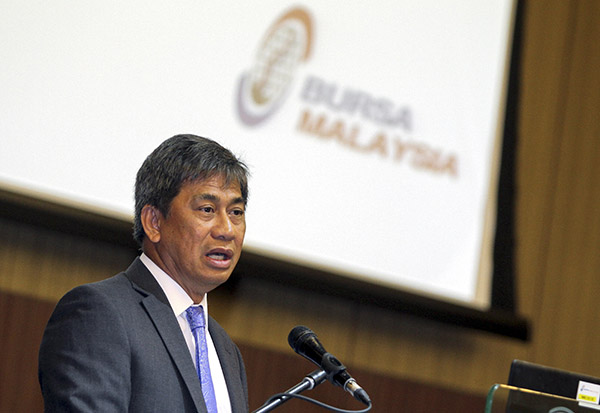
Bursa enlists measures to boost listings
Meanwhile, Bursa Malaysia is poised to launch a new private market, a platform specially designed for SMEs on the local bourse in the next quarter.
Its CEO Tajuddin said the new SME market, yet to be named, would allow Malaysian SMEs to have access to capital, thus helping to achieve the target of 41 per cent contribution to gross domestic product by 2020 set under the SME Masterplan.
“The discussion is currently at the higher level and we are in the final stages.
“We hope to have all the go-ahead (in terms) of all regulatory and proper approvals (from Securities Commission Malaysia) by the next quarter,” he said recently.
With the introduction of the SMR Market, there will be three trading markets on Bursa Malaysia, the other two being the Main Market and ACE Market.
Similar to the ACE Market, there would be no specific criteria set for participants in the new SME Market, meaning that there would be no profit track record needed but investors who were keen to participate must be high net-worth individuals.
He said trading activities for the SME Market would follow the ‘light-tight’ rules, whereby “if the rules are too restrictive, maybe we should loosen it, but if it’s too loose, then we will tighten it to make sure the market grows.”
He noted about 98.5 per cent of business establishments in Malaysia are SMEs.
Moreover, Bursa Malaysia remains committed to preserving market confidence and integrity.
In addition, he shared that the exchange also plans to strengthen its Islamic value proposition and widening the regional footprints in Asean.
“We also aim to further liberalise access to the market, to give investors greater opportunities to trade and invest.
“Market volatility is expected to persist in 2017 and as a result, the equity market is expected to remain challenging.
“The exchange remains cautiously optimistic, however, based on the country’s strong economic fundamentals and resilient banking system.
“These factors, together with our efforts in maintaining a fair and orderly market, will continue to support the growth agenda for the capital market,” Tajuddin said.
To further encourage more companies to raise funds from the equity market, the Securities Commission Malaysia (SC) had also introduced a new framework recently for listing of mineral, oil and gas (MOG) corporations that will expand opportunities for such businesses to enter the equity market recently.
The capital market regulator in a statement on January 19 said the framework will take effect on March 20 through the amendments to the Equity Guidelines, Prospectus Guidelines and Asset Valuation Guidelines.
“The amended guidelines aim to provide clarity on the types of MOG businesses considered suitable and eligible for listing on Main Market of Bursa Malaysia, particularly for those engaged in early stage exploration and extraction of MOG resources.
“These include additional requirements for MOG corporations to be eligible for listing on the local bourse, such as demonstrating adequate MOG assets under their portfolio.
“The new framework covers listings of MOG corporations either directly through IPO, indirectly through acquisition by listed companies, or qualifying acquisition by Special Purpose Acquisition Companies,” the capital market regulator said.
The SC explained that it developed the framework following a thorough review, jurisdictional benchmarking, engagements with investors and industry experts, as well as a public consultation process.
The capital market regulator believed the new regulatory measures would enable investors to make better informed decisions on the merits and risks of investing in MOG businesses, which is in line with the SC’s mandate of ensuring a fair and orderly capital market.
The new guidelines would also provide additional fundraising avenues for MOG corporations and in turn broaden investment options for investors.
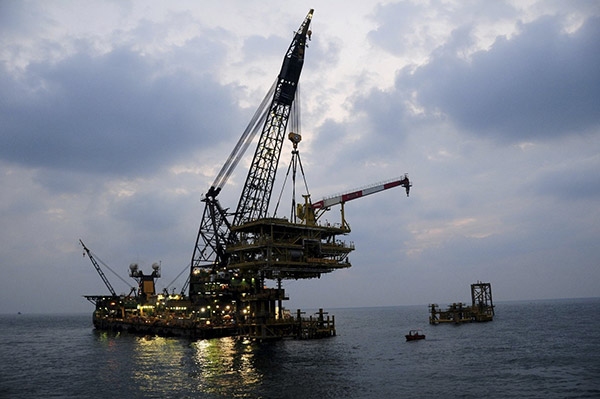
Spicing up regional IPOs
While the local bourse is looking to attract more listings, neighbouring bourses such as the Singapore Exchange (SGX) is in the process of making IPOs more available to retail investors.
It is believed that SGX will start with plans to impose a minimum retail allocation for IPOs to be listed on the Mainboard of SGX.
According to Singapore’s The Straits Times, a source close to the SGX said that the bourse is in the process of launching a public consultation exercise, with the results to be announced by end March, and any changes to require approval from the Monetary Authority of Singapore (MAS).
The development it said follows the bourse’s proposal in Feb 2016 to mandate that all Mainboard IPO aspirations to allocate at least 10 per cent of their offer shares to retail investors, up to a cap of S$100 million.
The paper also claimed that it has witnessed a paper submitted to SGX by 14 banks, which “generally agreed” that if a minimum retail allocation is to be imposed, there should be a dollar cap on the value of shares allocated to the public tranche.
Similarly, SGX has been promoting itself as a centre for business trusts and real estate investment trusts (REITs) which provides stable dividends.
It was reported that fundraising through IPOs in Singapore reached US$1.7 billion last year, an increase of five times from 2015.
Industry observers opined that SGX could become an attraction for companies to raise funds due to the country’s strong currency and weak investor sentiment in other regional bourses that could dampen deals.
They observed that normally Southeast Asia’s IPO markets were volatile.
They noted fundraising from listings has shrinked by half in Thailand to US$1.25 billion while in Indonesia, fundraising rose more than 50 per cent to hit US$1 billion.
Despite that, the IPO market for Malaysia is poised to recover this year with a few big market capitalisation companies tipped to join Bursa Malaysia.
SC’s chairman Tan Sri Ranjit Ajit Singh said, “We see global IPO markets picking up and we also see our IPO market picking up.
“Our estimates are around RM7 billion,” he said on the sidelines of an event in Kuala Lumpur last month.
To date, four new companies, HLT Global Bhd, Matang Bhd, Serba Dinamik Holdings Bhd and KIP REIT have been listed on Bursa Malaysia.
With more listing coming up this year, it will also bring the ‘feel good’ factor for the market such as the movement of the FTSE Bursa Malaysia Composite Index (FBM KLCI) as well as the market outlook of the financial market.
The research arm of CIMB Investment Bank Bhd (CIMB Research) was bullish on the movement of the FBM KLCI this year.
“We revealed to investors that we are more bullish on the end 2017 KLCI target of 1,820 points (which is based on 16 times forward price-to-earnings) against consensus estimates of 1,753 points.
“Foreign funds were mostly neutral to underweight in the market, which is reflected in the low foreign shareholding of 22.3 per cent in the equity market as at end of January 2017.
“However, they remain keen on stock ideas and some are relooking their underweight position in the market,” the research firm said in a report last week.
Besides, the research firm believed that there could be a re-rating of the FBM KLCI driven by corporate earnings recovery and the return of foreign investors.
Hence, analysts and market observers remain positive on the outlook of the FBM KLCI for 2017.
